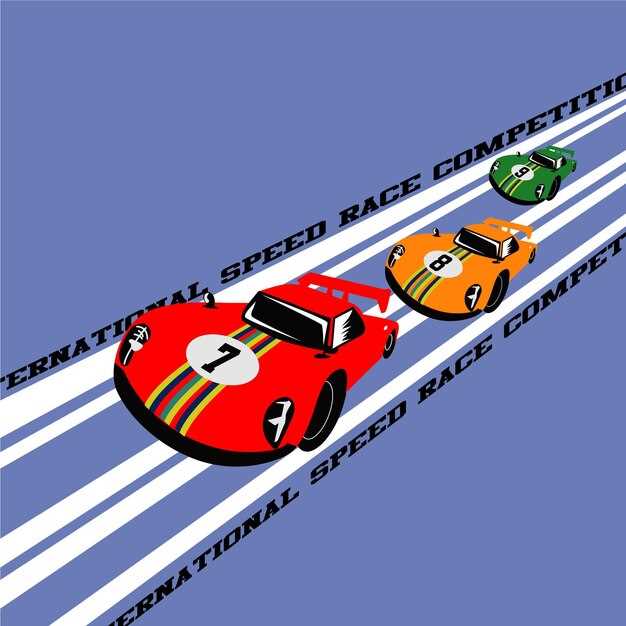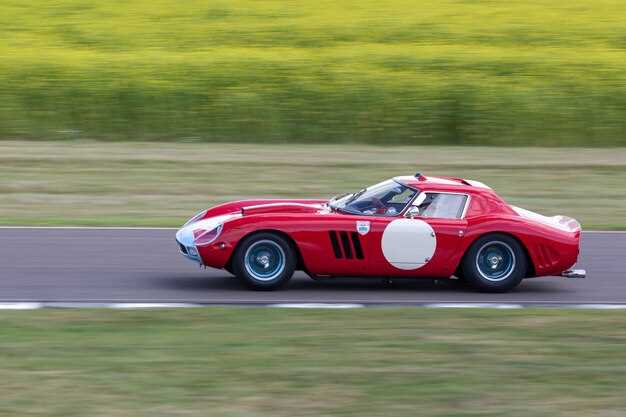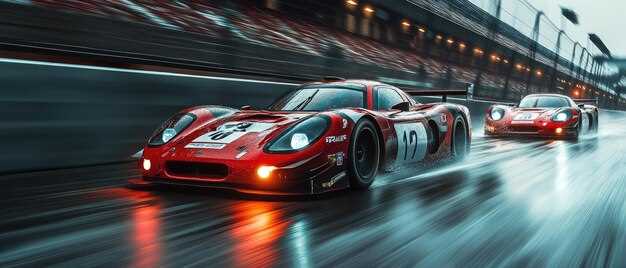
The history of Porsche is steeped in a rich racing tradition that began with the iconic 550 Spyder. Launched in the early 1950s, this lightweight sports car was not just a marvel of engineering but also a symbol of speed and agility on the racetrack. The 550 Spyder quickly earned a reputation for its remarkable performance, dominating numerous competitions and setting the stage for Porsche’s enduring legacy in the world of motorsport.
As we trace the evolution of Porsche’s racing pedigree, the transition from the 550 Spyder to the legendary 917K marks a significant milestone in automotive history. The 917K, introduced in the late 1960s, epitomized the pursuit of speed and innovation, boasting a powerful flat-12 engine and aerodynamic design that revolutionized endurance racing. This iconic machine not only captured multiple victories at the prestigious 24 Hours of Le Mans but also cemented Porsche’s status as a formidable competitor in the racing arena.
Through these legendary models, Porsche has woven a narrative of triumph, engineering excellence, and an unwavering commitment to performance. The journey from the nimble 550 Spyder to the powerful 917K demonstrates not only the technological advancements within the brand but also its deep-rooted passion for racing, inspiring generations of enthusiasts and shaping the future of sports cars.
Key Innovations of the Porsche 550 Spyder in Racing

The Porsche 550 Spyder, introduced in the mid-1950s, marked a significant evolution in racing technology and design. One of its most notable innovations was its lightweight construction, utilizing an aluminum and steel framework that reduced overall weight, enhancing speed and agility on the track.
Additionally, the 550 Spyder featured a mid-engine layout, a groundbreaking design for its time. This configuration allowed for improved weight distribution and better handling, giving drivers a competitive edge in cornering and maneuverability. The placement of the engine also contributed to a lower center of gravity, further stabilizing the vehicle at high speeds.
The Spyder was equipped with a 1.5-liter flat-four engine, which not only delivered impressive power relative to its size but also showcased Porsche’s engineering prowess. This engine was known for its reliability and responsiveness, traits that resonated well in the highly demanding environment of racing.
Another significant innovation was the integration of advanced aerodynamics. The sleek and low-profile design of the 550 Spyder minimized drag, allowing for higher top speeds on straightaways and optimal performance during races. This emphasis on aerodynamic efficiency set a benchmark for future models in the Porsche lineup.
The use of innovative materials and construction techniques also distinguished the 550 Spyder. The introduction of fiberglass components in some versions allowed for additional reductions in weight without sacrificing structural integrity. This approach emphasized Porsche’s commitment to using cutting-edge solutions in making racing vehicles.
Furthermore, the Spyder’s racing success was bolstered by its accessibility to private racers. Offering a competitive car that privateers could afford helped establish Porsche’s reputation within the motorsport community, leading to numerous achievements and accolades, including class victories in prestigious events like the 24 Hours of Le Mans.
Ultimately, the innovations found in the Porsche 550 Spyder laid the foundation for future models, influencing the design and engineering of subsequent racing cars. Its combination of lightweight construction, advanced aerodynamics, and exceptional handling capabilities defined an era of racing, making the 550 Spyder a pivotal milestone in the legacy of Porsche in motorsport.
Performance Analysis of the Porsche 917K in Endurance Racing

The Porsche 917K marked a significant evolution in the lineage of Porsche’s racing machines, building on the brand’s innovative spirit showcased in earlier models like the 550 Spyder and 550. Launched in 1970, the 917K was designed to dominate endurance racing, particularly at iconic events such as the 24 Hours of Le Mans.
One of the most critical aspects of the 917K’s performance was its potent flat-12 engine, which delivered exceptional power and acceleration. This engine configuration not only provided impressive horsepower but also allowed for a lightweight construction, essential for maintaining speed over extended periods. The 917K’s ability to achieve high speeds on long straights while also maintaining stability in curves was a testament to Porsche’s engineering prowess.
The aerodynamics of the 917K were meticulously developed to enhance downforce and minimize drag, an evolution that can be traced back to the lightweight, aerodynamic design of the 550 Spyder. The low profile and distinctive “long tail” body style of the 917K contributed to its aerodynamic efficiency, allowing for higher top speeds without sacrificing control. This balance was crucial in endurance racing, where tire degradation and fuel management were significant considerations.
Handling was another area where the Porsche 917K excelled. The vehicle featured a sophisticated suspension system that allowed it to navigate challenging track conditions with agility. This adaptability was vital during endurance races, where drivers contended with changing weather and track surfaces. The 917K’s precise steering and responsive braking system further solidified its reputation as a formidable competitor.
Lastly, the reliability of the Porsche 917K set it apart in endurance racing. Porsche’s relentless focus on engineering excellence ensured that the car could endure the grueling demands of long races without frequent mechanical failures. This reliability, combined with its top-notch performance metrics, allowed the 917K to secure its place as one of the most successful race cars in history, following in the footsteps of the 550 Spyder’s legacy in motorsport.
The Impact of Porsche Racing Models on Motorsport Heritage
Porsche has left an indelible mark on the world of motorsport, with its racing models becoming symbols of engineering excellence and competitive spirit. The journey begins with the Porsche 550 Spyder, which debuted in the mid-1950s and set the stage for the brand’s racing ambitions. The lightweight construction and nimble handling of the 550 Spyder allowed it to dominate various races, including the prestigious Mille Miglia and countless others, establishing a strong reputation in endurance racing.
The success of the 550 Spyder paved the way for subsequent models, each building on the legacy of its predecessors while introducing innovations that would shape the future of racing. The 917K, for instance, became one of the most iconic racing cars in history, claiming victory at the 24 Hours of Le Mans in 1970 and 1971. Its powerful flat-12 engine and aerodynamic design marked a significant evolution in performance and technology, influencing not just Porsche’s future designs but also setting benchmarks for competitors in the high-stakes world of endurance racing.
Throughout the decades, Porsche’s commitment to innovation and performance has inspired numerous manufacturers and drivers. Racing models like the 911 Carrera RSR and the 962 have showcased Porsche’s ability to adapt to changing regulations and maximize speed and efficiency. Each model contributes to the rich narrative that defines motorsport heritage, highlighting the importance of perseverance, creativity, and the relentless pursuit of excellence.
Porsche’s racing history is a testament to its dedication to motorsport, with the 550 Spyder and 917K serving as pivotal chapters that not only influenced the company’s trajectory but also left a lasting legacy that resonates throughout the industry. As future generations build upon this foundation, the impact of these legendary racing models will remain a defining aspect of automotive culture and technological advancement in motorsport.
 Skip to content
Skip to content





